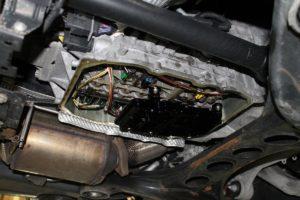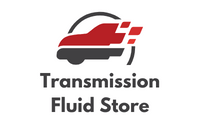Automatic transmission refers to a type of transmission system in which the vehicle’s gear ratios are automatically adjusted based on the speed of the vehicle, allowing for a smoother and more comfortable driving experience. Automatic transmissions have become increasingly popular in the automotive industry due to their ease of use and ability to provide better fuel efficiency and performance than manual transmissions. They have become an essential component of modern cars, making them more accessible to a wider range of drivers.
This article aims to provide an in-depth overview of the different parts of an automatic transmission and their functions. The article will cover the main components of an automatic transmission, including the torque converter, planetary gear set, hydraulic system, clutches and bands, and valve body. By understanding the different parts of an automatic transmission, drivers can better maintain and repair their vehicles, prolonging their lifespan and ensuring their safety on the road. The article will also touch on future developments in automatic transmission technology, giving readers a glimpse into the direction that the automotive industry is heading towards.
Contents
Key Components of an Automatic Transmission

Torque Converter
A torque converter is a vital component of an automatic transmission system that allows for the smooth and efficient transfer of power from the engine to the transmission. It consists of three main components: the impeller, turbine, and stator. The impeller is connected to the engine and is responsible for pumping transmission fluid into the torque converter, while the turbine is connected to the transmission and receives the fluid from the impeller. The stator is located between the impeller and turbine and helps to redirect the fluid flow for maximum efficiency.
The torque converter works by using hydraulic fluid to transfer torque from the engine to the transmission. As the engine spins, the impeller spins with it, creating a fluid flow that is directed towards the turbine. The fluid flow causes the turbine to spin, which then sends power to the transmission. The stator helps to redirect the fluid flow, increasing the efficiency of the torque converter and allowing for greater power transfer. This process allows the vehicle to smoothly transition between gears, providing a comfortable and efficient driving experience.
The torque converter is a critical component of an automatic transmission system that allows for the smooth transfer of power from the engine to the transmission. Its three main components work together to create a hydraulic system that enables the vehicle to transition between gears seamlessly. By understanding the function and components of the torque converter, drivers can better maintain and repair their vehicles, ensuring their safety and longevity on the road.
Planetary Gear Set
A planetary gear set is a fundamental component of an automatic transmission that allows for the transmission to provide different gear ratios for different driving conditions. It consists of three main components: the sun gear, planet gears, and ring gear. The sun gear is located in the center of the planetary gear set and is connected to the torque converter. The planet gears are located around the sun gear and are connected to a carrier, which is connected to the transmission output shaft. The ring gear is located on the outside of the planetary gear set and is stationary.
The planetary gear set works by using different combinations of the sun gear, planet gears, and ring gear to provide different gear ratios. The gear ratio determines the relationship between the speed of the engine and the speed of the wheels, allowing for the vehicle to operate efficiently in different driving conditions. For example, a lower gear ratio provides more torque to the wheels, allowing the vehicle to accelerate quickly from a stop. A higher gear ratio provides less torque to the wheels, allowing the vehicle to travel at higher speeds with greater fuel efficiency.
The planetary gear set is gears for an automatic transmission system that provides different gear ratios for different driving conditions. Its three main components work together to create a system that allows the vehicle to operate efficiently and smoothly. By understanding the function and components of the planetary gear set, drivers can better maintain and repair their vehicles, ensuring their safety and longevity on the road.
Hydraulic System
The hydraulic system is a crucial component of an automatic transmission that controls the flow of transmission fluid and engages/disengages clutches and bands to shift gears. It works by using pressurized transmission fluid to actuate different components of the transmission, such as the clutches and bands that engage or disengage to create different gear ratios. The hydraulic system consists of several components, including a pump, valve body, and control solenoids.
The pump is responsible for creating the pressure necessary to operate the hydraulic system. It draws transmission fluid from the transmission pan and pumps it through the system, pressurizing it to activate the clutches and bands. The valve body is located in the transmission and contains several passages and valves that control the flow of fluid to the various components of the transmission. The control solenoids are small electronic devices that regulate the flow of fluid to the clutches and bands, allowing the transmission to shift gears smoothly and efficiently.
The hydraulic system works by using pressurized fluid to activate the clutches and bands, which engage or disengage to create different gear ratios. When a gear change is required, the control solenoids send a signal to the valve body, which redirects the flow of fluid to the appropriate clutch or band. This causes it to engage or disengage, creating the desired gear ratio. By controlling the flow of fluid and engaging/disengaging the clutches and bands, the hydraulic system allows for smooth, efficient shifting in an automatic transmission.
The hydraulic system of an automatic transmission uses pressurized transmission fluid to control the flow of fluid and engage/disengage clutches and bands to shift gears. Its various components work together to create a system that allows for smooth, efficient shifting and optimal performance of the transmission. Understanding the function and components of the hydraulic system can help drivers maintain and repair their vehicles, ensuring a safe and reliable driving experience.
Clutches and Bands
Clutches and bands are critical components of an automatic transmission that work together to control the movement of the planetary gear set and provide different gear ratios. Clutches are used to connect rotating components in the transmission, while bands are used to anchor rotating components to a stationary part of the transmission. Together, they work to provide smooth and efficient power transfer between the engine and wheels of the vehicle.
There are two main types of clutches and bands used in automatic transmissions: friction and steel. Friction clutches consist of two plates with a friction material, such as brake lining, sandwiched between them. When hydraulic pressure is applied to the plates, they are pressed together, causing the friction material to grip and rotate the shaft. Steel clutches, on the other hand, use two plates made of metal that are pressed together to create a solid connection between two rotating components.
Clutches and bands work together with the planetary gear set to provide different gear ratios. By engaging or disengaging the clutches and bands, the planetary gear set can rotate at different speeds, allowing for different gear ratios to be created. For example, by engaging one clutch and disengaging another, the planetary gear set can be locked in place, creating a 1:1 gear ratio that allows for direct power transfer from the engine to the wheels. By engaging different combinations of clutches and bands, the transmission can provide a range of gear ratios to suit different driving conditions.
Clutches and bands work together to control the movement of the planetary gear set and provide different gear ratios. They come in different types, including friction and steel, and work by engaging or disengaging to create the desired gear ratio. Understanding the function and types of clutches and bands can help drivers maintain and repair their vehicles, ensuring optimal performance and a safe driving experience.
Valve Body
The valve body is a critical component of an automatic transmission that works to direct the flow of transmission fluid and control the engagement of clutches and bands. It is located inside the transmission case and is responsible for controlling the hydraulic pressure and fluid flow that is required to engage and disengage the various clutches and bands in the transmission. The valve body contains a complex network of passages, control valves, and springs that work together to regulate the flow of transmission fluid and provide precise control over the transmission’s shifting behavior.
The valve body consists of a series of control valves and springs that are responsible for regulating the flow of transmission fluid and controlling the engagement and disengagement of the various clutches and bands in the transmission. These valves and springs are controlled by the transmission’s computer, which uses input from various sensors to determine the correct timing and pressure for each shift. The valve body is typically made of aluminum and is designed to withstand the high pressures and temperatures that are generated by the transmission.
The valve body works by directing the flow of transmission fluid to the various clutches and bands in the transmission. When the computer determines that a shift is required, it sends a signal to the valve body to open or close specific valves, which then directs the flow of fluid to the appropriate clutches and bands. This allows the transmission to smoothly and efficiently engage and disengage gears, providing the driver with a smooth and responsive driving experience. The valve body is a critical component of the automatic transmission and is essential to its proper functioning.
Conclusion – Parts of an Automatic Transmission
An automatic transmission is a complex system that includes several critical components working together to provide smooth and efficient shifting. The torque converter is responsible for transferring power from the engine to the transmission, while the planetary gear set provides different gear ratios for different driving conditions. The hydraulic system controls the flow of transmission fluid and engages/disengages clutches and bands, and the valve body directs the flow of fluid to the appropriate clutches and bands.
It is essential to understand the different parts of an automatic transmission, as this knowledge can be valuable for maintenance and repair purposes. Regular maintenance, such as fluid changes and inspections, can help extend the lifespan of an automatic transmission and prevent costly repairs. In addition, having a basic understanding of how the transmission works can help identify potential issues early on and prevent further damage.
As automotive technology continues to evolve, we can expect to see further developments in automatic transmission technology. Hybrid and electric powertrains are becoming increasingly common, and we may see changes in the design of transmission parts to accommodate these new technologies. Advances in materials science and manufacturing processes may also lead to improvements in the durability and performance of transmission parts. Ultimately, a deeper understanding of the parts and functions of automatic transmissions will be crucial to staying up-to-date with these developments and maintaining the reliability and efficiency of our vehicles.

1 thought on “Parts of an Automatic Transmission – Key Components”
Comments are closed.